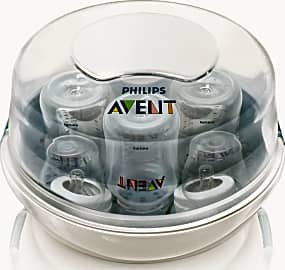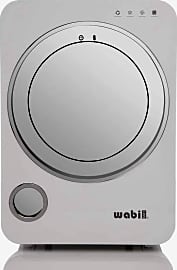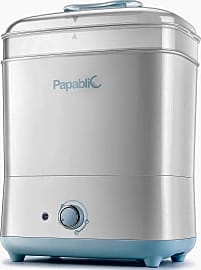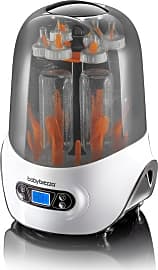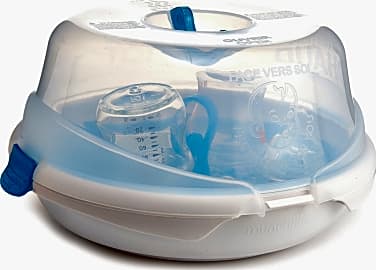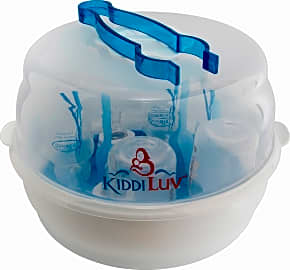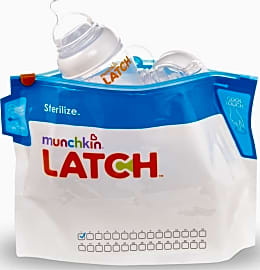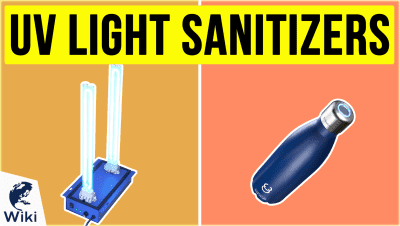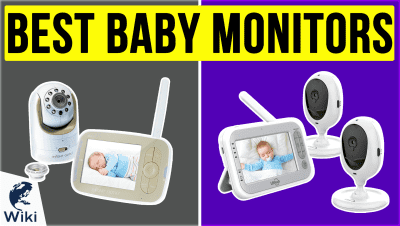The 10 Best Bottle Sterilizers

This wiki has been updated 34 times since it was first published in September of 2016. Caring for a newborn entails a tremendous amount of time and effort, and ensuring that your charge is safe and well-fed is among the most important aspects of parenting. The bottle sterilizers on our list can help you keep your feeding equipment free from potentially harmful germs, and many can also clean things like sippy cups, pacifiers, and the components of breast pumps. When users buy our independently chosen editorial choices, we may earn commissions to help fund the Wiki.
Editor's Notes
April 23, 2020:
The safety of a baby comes first when evaluating sterilizers like these, so we removed the First Years Power Of Steam, which had a tendency to collect water in certain places and necessitate that the user manually dry it or risk the development of mold, and anything that adds time consuming effort or increased risk to a new parent's daily routine is a non-starter.
In its place we brought out a UV system in Evla's UV Hospital Strength, which has a good capacity for its footprint, and which is both fast an easy to use. It's one of a few models we included that utilize ultraviolet light for sterilization as opposed to steam, so not only is mold growth not an issue, but there's less time spent waiting for bottles to dry. If a steam model has a built-in dryer of some kind, that's great, but not having to deal with water is even better.
The only real downside to the UV models is that they're much more expensive than even high-end steam offerings like Baby Brezza Universal Fit. They're also not portable the way that Munchkin Latch Bags are, but for our money we'd recommend one of the nicer steam or UV options for the home and bags like those for travel.
Special Honors
Upang Plus UV This is an ultraviolet option that places its lamps on a rotating axis with mirrors covering every interior wall, ensuring that the light makes its way into every nook and cranny of your feeding equipment. A dot matrix display built into the door of the unit will tell you what mode you're on and how much time is left in a cycle. upanguvsterilizer.com
Why You Need A Bottle Sterilizer
One thing many people aren't prepared for, however, is just how much stuff you need to raise a child.
There are many things you're prepared for before you have a baby — sleepless nights, lack of a social life, and completely abandoning all your favorite TV shows. One thing many people aren't prepared for, however, is just how much stuff you need to raise a child.
Nasal aspirators? Wipe warmers? Bottle sterilizers?
Wait — hold up on that last one. In case you weren't already aware, keeping bottles and nipples clean is incredibly important for newborns. That's because their little immune systems haven't fully developed yet, and so they're at higher risk for infections and illnesses in the first few years of their lives.
This is why many people have recommended boiling or steaming bottles over the years. The high heat kills off parasites and bacteria, giving your baby the cleanest drinking surface possible.
And while you can still boil all your equipment if you prefer, there are certainly advantages to using a sterilizer instead.
The primary benefit, of course, is that it's much easier. Boiling all that water is time-consuming and creates a mess in the kitchen. It's also wasteful to fill up an entire pot, whereas most sterilizers use only a cup or so of water. And speaking of messes, sterilizers can double as a storage place for all of your bottles and nipples when they're not in use.
However, you should know that many dishwashers are perfectly capable of sterilizing bottles, so you're not a monstrous parent if you decide not to get one. And since most drinking water these days is chlorinated, there's less chance that there's any bacteria in there in the first place (you should still sterilize if you use well water or other unreliable sources, however).
Also, keeping anything completely sterile is basically impossible, so don't trick yourself into thinking those bottles will be immaculate. Still, it's worth trying to make things as clean as you can.
Of course, when you have a baby, "keeping things as clean as you can" is often nothing more than a pipe dream, anyway.
The Dangers Of Using Dirty Bottles
You'd do anything to make sure that your child is safe and healthy, so the idea of using bottles that aren't squeaky-clean might be completely unfathomable to you. Just in case you're having any doubts, though, here are a few reasons why you should definitely sterilize those bottles to the best of your ability.
This family of germs isn't very common, but they are disastrous, so it's worth taking every precaution to avoid them.
The most likely danger you'll encounter is digestive troubles, such as gastroenteritis. This disease can cause diarrhea, cramping, and vomiting. You're probably thinking that a baby having diarrhea is hardly worth getting worked up about, but gastroenteritis can be fatal for infants, so don't take any chances.
Another major concern is the Cronobacter bacteria. This family of germs isn't very common, but they are disastrous, so it's worth taking every precaution to avoid them. They can cause everything from blood infections to meningitis, with the latter being especially likely for infants. Premature babies are at a higher risk, so definitely be careful with what you give them.
There are a whole host of other diseases that could potentially be caused by dirty bottles, such as hepatitis A and thrush, but we won't scare you with a full list here.
What we will say, however, is that you should worry far more about a wet bottle and nipple than a dry one. Make sure that any used bottles are cleaned, whether in your dishwasher or a committed sterilizer, and then dry them thoroughly. Also, never re-use a bottle or nipple without washing it first, as saliva and milk are incredible breeding grounds for nasty microorganisms.
Basically, if you take some common-sense precautions, there's little reason to worry about your baby getting sick from their bottle. However, be sure you take those precautions, because some of the possible illnesses can be pretty severe.
Other Ways To Keep Your Infant Safe
When you become a parent (especially if it's for the first time), it's amazing how dangerous the world suddenly appears. Every little thing — from bathtubs to blankets — starts to seem like an incredible hazard, just lying in wait to harm your child.
Fortunately, things aren't that dire, but nevertheless there are some things you should be aware of if you want to provide your baby with the safest environment possible.
While having a bath seat can help, it's no substitute for your attention, so don't turn your back even for a second.
Your primary area of concern should be the baby's sleeping space. This is the place where you'll be watching him the least, as you'll be asleep yourself (though you'll likely have a baby monitor to alert you to anything going awry).
To avoid SIDS, make sure your child sleeps on his back on a firm mattress, and keep any choking hazards — like cushy pillows, blankets, or plush toys — far away. Dress him in a warm, one-piece jumper instead of getting him a blanket, and avoid crib bumpers, as these can also restrict his breathing.
The changing table is another place where disaster can strike. If you're not careful, your baby can roll off while you're hands are full, and babies don't bounce very well. Safety straps are a must, so either buy a model that already has them, or add them to the table you currently own. Of course, you could always just change your baby on the floor as well.
Another risky environment — but one that's a little more obvious — is the bathtub. While having a bath seat can help, it's no substitute for your attention, so don't turn your back even for a second. Also, to prevent scalding him, consider getting a showerhead that indicates the water temperature.
The good news is that the world isn't as scary for a newborn as it may first appear. If you take the necessary precautions, there's no reason why your kid should ever be in any real danger.


